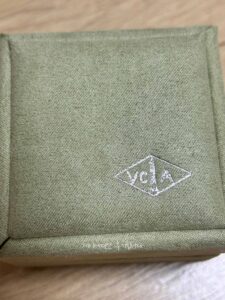
Open a Fixed Deposit Account
Banks and non-banking financial institutions offer investment products called fixed deposits (FDs). Fixed Deposits allow customers to deposit large sums of money for fixed periods (from 7days to 20years). This is in exchange for interest rates that are higher than those offered by regular savings accounts.
There is usually a penalty for withdrawing funds from your account before the end of the lock-in period. Furthermore, once money has been deposited into an FD, no more can be added to the account. A brand new FD must be made to achieve any further goals. It’s up to you if you choose to renew your FD or cash it out when it expires.
Banks typically extend FD schemes to account holders with savings accounts. Fixed deposit interest rates offered by banks are generally lower than those provided by NBFCs (Non-banking Financial companies). Some banks, however, offer perks such as deposit insurance of up to Rs 5 lakh when creating FDs.
Let’s look at the eligibility for an FD Scheme:
● Indian Residents
The Reserve Bank of India requires applicants to be Indian citizens residing in India: for opening a fixed-deposit. As a result, non-resident Indians (NRIs) and non-Indians India are not eligible to apply for FDs.
● Hindu Undivided Family
Another category eligible for an FD is a Hindu Undivided Family (HUF) recognised by Indian law.
● Sole proprietorships and other organisations
Corporations with a single proprietor are welcome to apply for fixed deposit programs. The same applies to partnerships and other companies (including group companies) registered with the Government of India. Clubs, societies, and other types of associations are also eligible to apply for an FD.
● Family Trust
Family trusts are established to handle a family’s financial affairs or manage the family business. A family trust can apply for FDs, but the same benefit does not extend to charitable trusts.
Let’s find out what documents are needed for fixed deposits.
● Self-attested ID Proof
You must produce a photocopy of your identification documents that you have attested to yourself. An Aadhaar Card, Passport, Driver’s Licence, Voter ID cards, and NREGA employment cards are all acceptable forms of identification.
● Self-attested address proof
You must also provide documents attesting to your identity and residency, both of which must be self-attested. You can use a passport, voter ID card, driver’s licence or Aadhaar card as proof of address. Alternately, you can also use your utility bill, property deed, or bank statement for this.
● Signature Proof
Verifying your signature is a security measure employed by most financial institutions. This allows them to prevent unauthorised individuals from accessing and withdrawing funds from your account. A photocopy of your passport, PAN card, or driver’s licence would suffice, while submitting your signatures.
Payments of FD interest can be received by you on a monthly, quarterly, semiannual, or annual basis. This depends on how you wish to meet the financial plans you have, or the obligations you need to meet in the future.
To sum up, FDs are quite simple to apply for. If you meet an institution’s eligibility conditions and submit the necessary paperwork on time: your application will be approved promptly. There are many advantages to FDs as well. In case of an unexpected expense, you might take out a loan against your FD. In addition, pre-approved offers on loan products and other services also become available for those who can place their FDs against the borrowed corpus.
Why Invest in a Fixed Deposit?
A fixed deposit allows you to invest a set sum for a predetermined period. Interest is paid to you at the rate you’ve set. In a cumulative fixed deposit, the rate of interest of FD you earn is added to your principal. This allows your money to increase over time. Upon the maturity of a fixed deposit, you receive the principal amount combined with the interest earnings.
This interest income is yours to take or reinvest at regular intervals monthly, quarterly, semiannually, or annually. If you already have a savings account, you can save directly from it towards an FD. If you don’t have one, you can open a fixed deposit account. If you do not already have a savings account, completion of the Know Your Customer (KYC) procedure is required. The Non-Resident External FD and Non-Resident Ordinary FD allow non-Indian citizens to open fixed deposit accounts in India.
How to choose the best institution to place your Fixed Deposits?
There are a few things you must keep in mind while deciding where to place your FDs. Whether it is a bank or an NBFC, you must choose wisely. Some of the things to look out for are:
● The interest rate must be competitive, in the range of 3.25% to 7.00% p.a.
● You should be able to manage and access your FD online.
● It should be a trust-worthy institution with a good record.
● Senior citizens should be eligible for a higher interest rate.
● You should be able to choose a term of anything between 7 days to 20 years.
● You should be able to nominate someone for the FD.● An early exit, in whole or in part, should be permitted.







